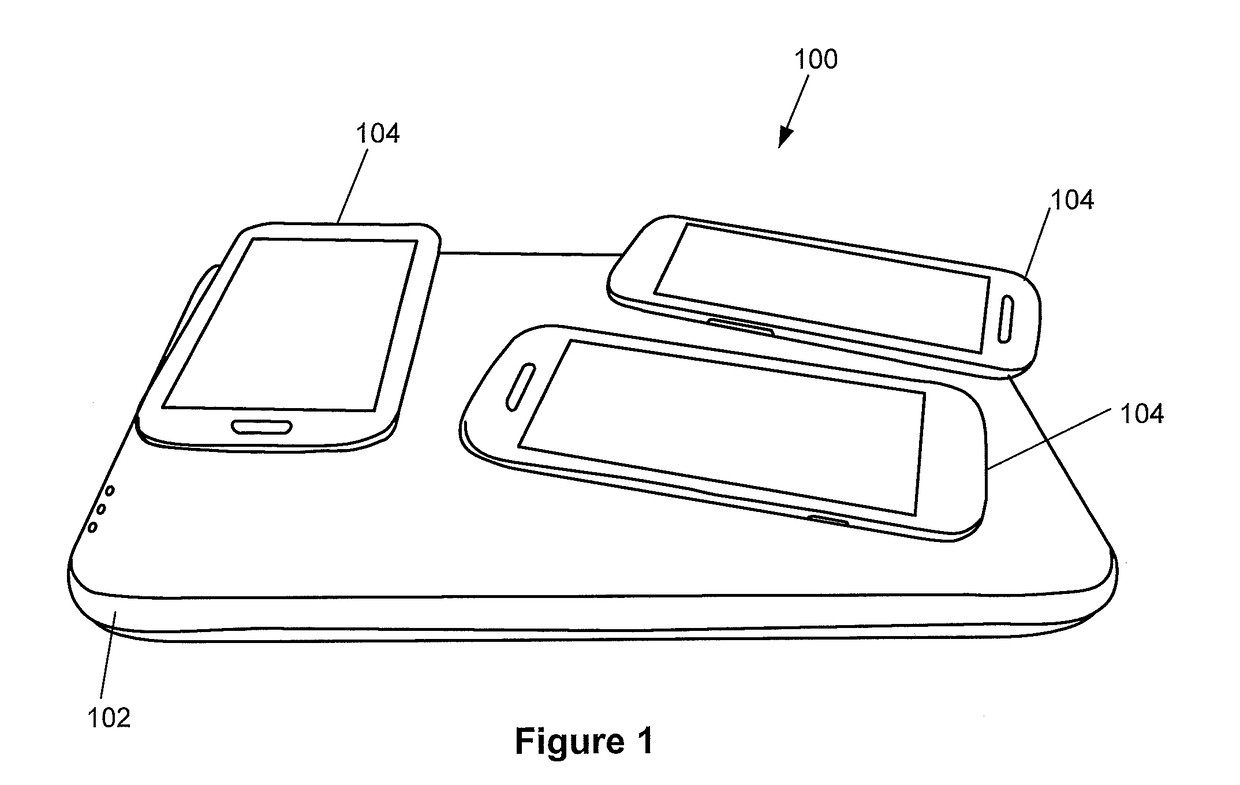System and method for power transfer
a power transfer and system technology, applied in the direction of electric power, transportation and packaging, electric vehicles, etc., can solve the problems of unsatisfactory approach, unreliable power supply, and unreliable power supply, so as to reduce the induced current in the windings and reduce the induced current in the transmitter coils
- Summary
- Abstract
- Description
- Claims
- Application Information
AI Technical Summary
Benefits of technology
Problems solved by technology
Method used
Image
Examples
Embodiment Construction
[0097]FIG. 1 illustrates a typical application 100 of the present invention. The wireless power transfer system 100 is illustrated as having a transmitter or charging “pad”102 having a plurality of consumer electronic devices 104 disposed thereon so that electrical loads or energy storage elements, e.g., batteries, of the devices can be charged with electrical power in a wireless or contactless manner. In the illustrated example, the electrical power is provided between the pad and devices via electromagnetic induction or inductive power transfer (IPT) using loose-coupling techniques between transmitter and receiver electronics. However, other types of wireless power transfer may be possible for such a system, such as capacitive power transfer.
[0098]The transmitter and receiver electronics of the charging pad 102 and the devices 104 are configured so that the disposition of the devices on the pad can be arbitrarily selected by the user without the need to ensure pre-defined alignmen...
PUM
 Login to View More
Login to View More Abstract
Description
Claims
Application Information
 Login to View More
Login to View More - R&D
- Intellectual Property
- Life Sciences
- Materials
- Tech Scout
- Unparalleled Data Quality
- Higher Quality Content
- 60% Fewer Hallucinations
Browse by: Latest US Patents, China's latest patents, Technical Efficacy Thesaurus, Application Domain, Technology Topic, Popular Technical Reports.
© 2025 PatSnap. All rights reserved.Legal|Privacy policy|Modern Slavery Act Transparency Statement|Sitemap|About US| Contact US: help@patsnap.com



